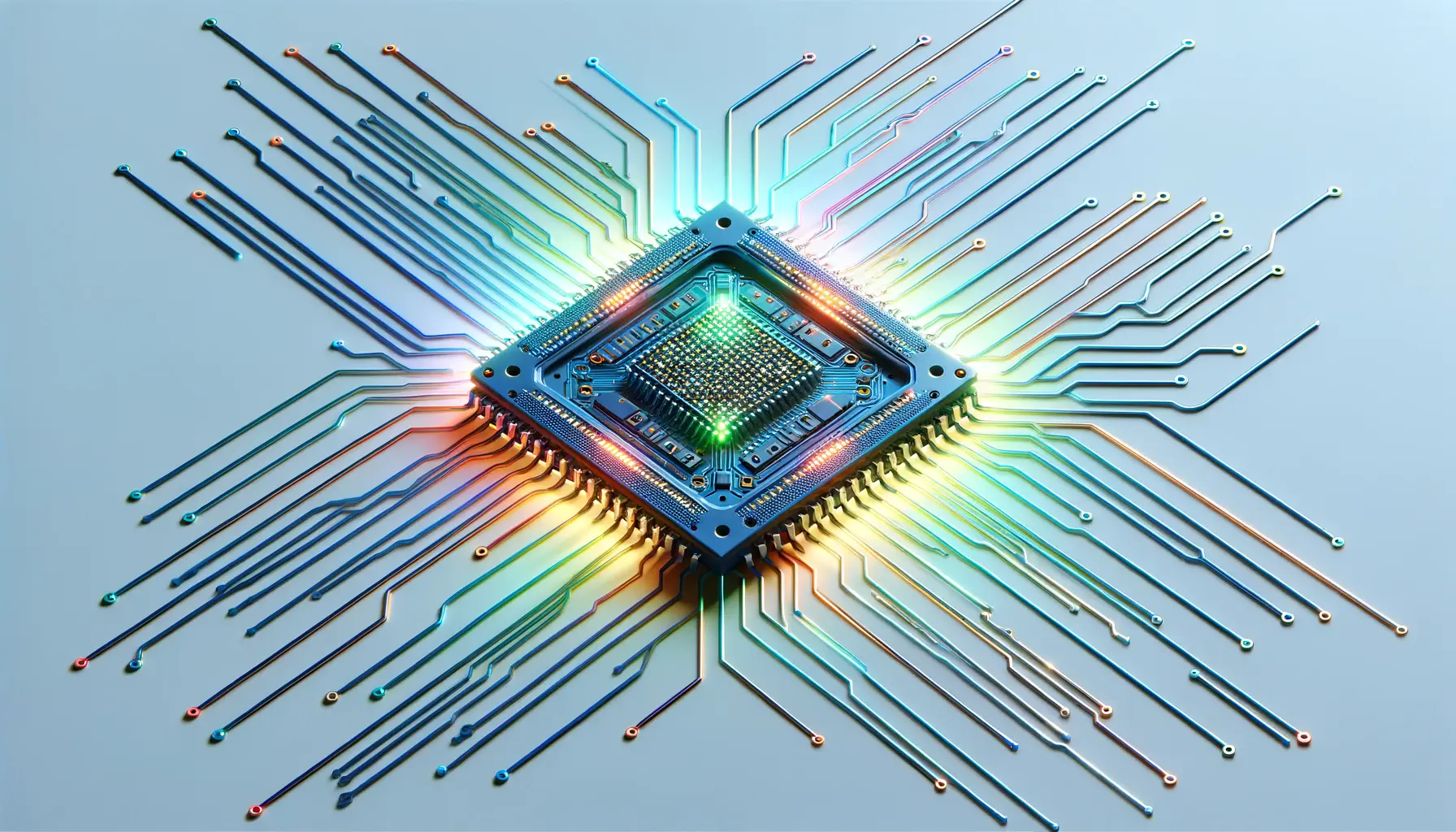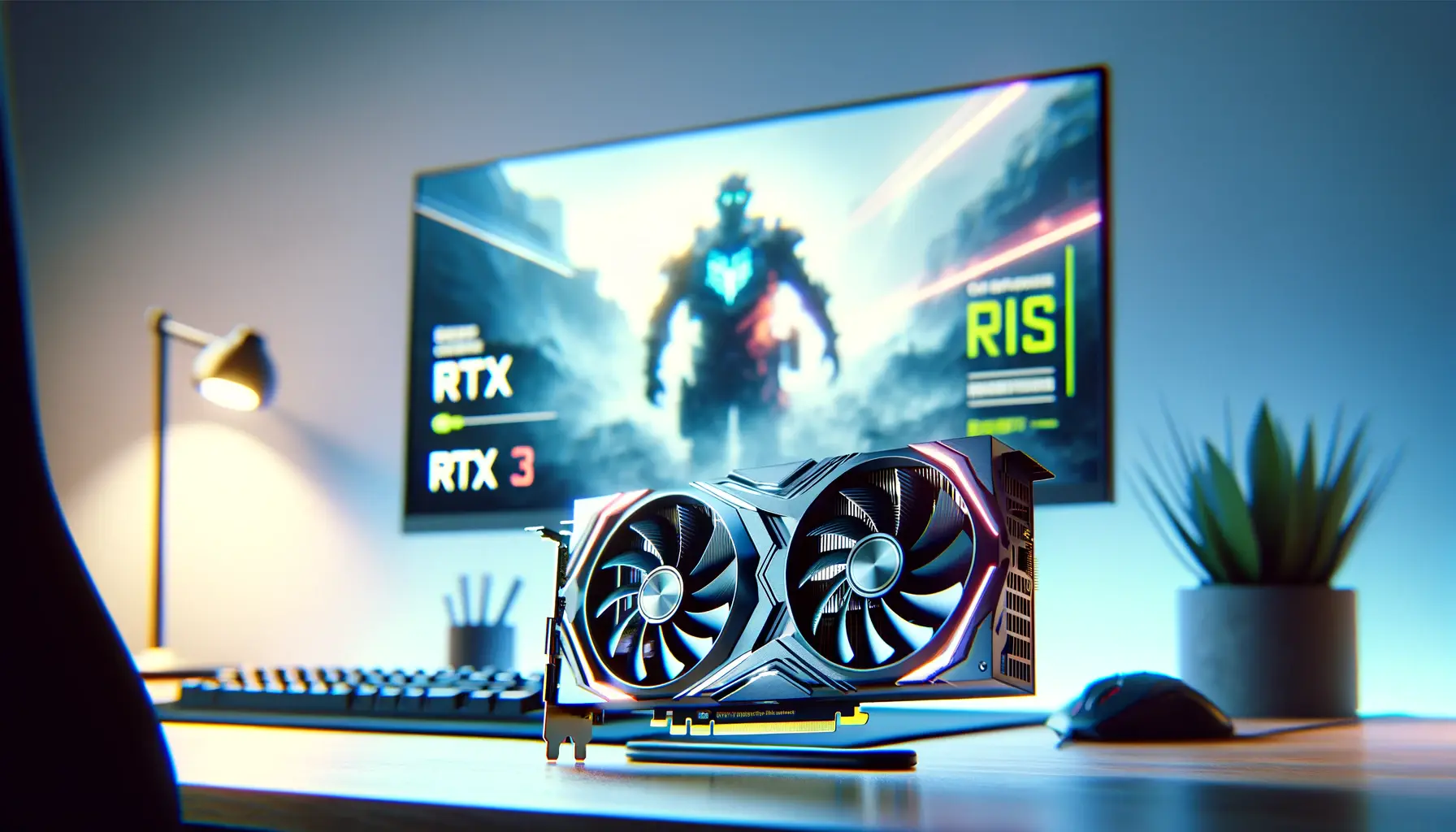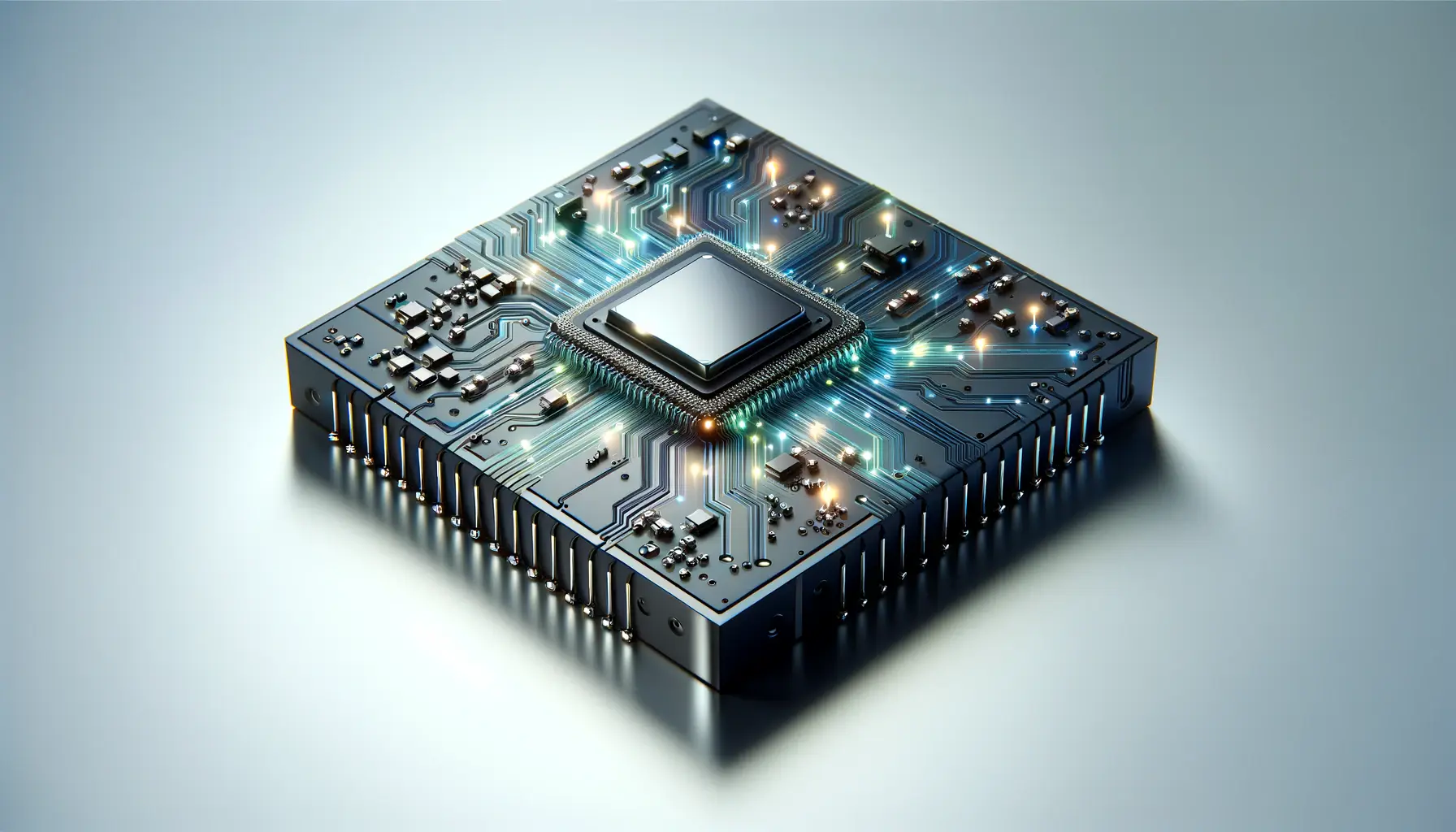Deep Learning Super Sampling, or DLSS, has been a game-changer in the realm of graphics rendering, pushing the boundaries of visual fidelity and performance.
With the advent of DLSS 3, NVIDIA continues to redefine what’s possible in gaming and professional visualization.
This technology, rooted deeply in artificial intelligence and machine learning, offers a glimpse into the future of real-time graphics, making it a pivotal moment for developers and consumers alike.
At its core, DLSS 3 harnesses the power of NVIDIA’s dedicated AI processors, known as Tensor Cores, to deliver a groundbreaking improvement in image quality and frame rates.
This iteration not only enhances the visual output but also introduces innovative features that significantly reduce the workload on traditional rendering pipelines.
By intelligently generating high-quality frames from lower-resolution images, DLSS 3 enables games and applications to run at unprecedented speeds without compromising on the visual experience.
- Understanding DLSS Technology
- The Impact of DLSS 3 on Gaming Performance
- Compatibility and Implementation of DLSS 3
- DLSS 3 and the Future of Real-Time Ray Tracing
- DLSS 3 in Professional and Creative Workflows
- Challenges and Considerations for DLSS 3 Adoption
- Exploring the Versatility of DLSS 3 Across Genres
- Embracing the Future with DLSS 3 Technology
- DLSS 3 Technology: Frequently Asked Questions
Understanding DLSS Technology
The Evolution of DLSS
DLSS began as a revolutionary approach to anti-aliasing, offering a smarter, AI-driven method to smooth out edges and improve image quality without the heavy performance costs associated with traditional techniques.
Over time, NVIDIA has refined this technology, with DLSS 2.0 marking a significant leap in terms of flexibility and image fidelity.
DLSS 3, however, takes this a step further by not just improving existing frames but by generating entirely new frames, enhancing both performance and visual quality.
This evolution reflects NVIDIA’s commitment to leveraging AI for real-time graphics rendering, showcasing how deep learning can transform the way we experience digital content.
The technology behind DLSS 3 is a testament to the potential of AI to not only mimic but enhance human perception of visuals in gaming and professional applications.
How DLSS 3 Works
DLSS 3 introduces the concept of Optical Multi-Frame Generation, where the AI utilizes two consecutive frames to predict and generate additional frames in-between.
This process, powered by the latest generation of Tensor Cores and the Optical Flow Accelerator, significantly boosts frame rates by inserting these AI-generated frames, effectively smoothing out gameplay and enhancing the overall experience.
Moreover, DLSS 3’s Frame Generation technology is a marvel in its own right.
By analyzing and understanding the motion and changes between frames, it can create new frames that maintain the game’s visual integrity and fluidity.
This not only improves performance by reducing the load on the GPU but also ensures that the visual quality is not compromised, even at lower base resolutions.
DLSS 3 represents a significant advancement in AI-driven graphics technology, offering both enhanced performance and superior image quality.
The Impact of DLSS 3 on Gaming Performance
The introduction of DLSS 3 has had a profound impact on gaming, transforming the way games are played and experienced.
By leveraging AI to enhance both the efficiency and quality of rendering, DLSS 3 allows for smoother gameplay, higher frame rates, and improved visual fidelity across a wide range of titles.
This section delves into the specific benefits that DLSS 3 brings to the gaming world, highlighting its role in elevating the gaming experience to unprecedented levels.
Enhanced Frame Rates and Smooth Gameplay
One of the most immediate benefits of DLSS 3 is its ability to significantly boost frame rates.
This is achieved through its innovative frame generation technique, which effectively doubles the perceived frame output without placing additional strain on the GPU.
For gamers, this means smoother gameplay and the ability to enjoy high-fidelity graphics even on less powerful hardware.
- Reduced Latency: DLSS 3 also contributes to reduced latency, ensuring that the input from gamers is reflected on the screen more quickly. This is crucial for competitive gaming, where every millisecond counts.
- Adaptive Resolution: The technology dynamically adjusts the rendering resolution based on the complexity of the scene, ensuring optimal performance without sacrificing quality.
Visual Quality Enhancements
DLSS 3 not only improves performance but also enhances the visual quality of games.
By generating high-quality frames from lower-resolution images, it allows for sharper details and more vibrant textures, making the gaming worlds more immersive and realistic.
- Improved Texture Details: With DLSS 3, textures appear more detailed and refined, even when viewed up close, enhancing the realism of game environments.
- Enhanced Lighting and Shadows: The technology also allows for better lighting and shadow effects, contributing to more dynamic and atmospheric game worlds.
The integration of DLSS 3 into games represents a significant leap forward in gaming technology, offering a blend of performance and quality that was previously unattainable.
Compatibility and Implementation of DLSS 3
The widespread adoption and implementation of DLSS 3 technology hinge on its compatibility with gaming hardware and software ecosystems.
NVIDIA has made strides in ensuring that DLSS 3 is not only a cutting-edge technology but also accessible to a broad audience.
This section explores the compatibility requirements and the process of integrating DLSS 3 into games, shedding light on how developers and gamers alike can leverage this technology.
Hardware Requirements
DLSS 3 is designed to run on NVIDIA’s latest generation of graphics cards, which are equipped with the necessary Tensor Cores and Optical Flow Accelerators to support its advanced AI-driven processes.
This means that to take full advantage of DLSS 3, gamers need to have compatible hardware that can handle the technology’s demands.
- GeForce RTX Series: Specifically, DLSS 3 is supported by the GeForce RTX 30 and 40 series GPUs, which include the fourth-gen Tensor Cores required for the AI computations.
- System Requirements: Beyond the GPU, the overall system needs to meet certain specifications to ensure optimal performance, including sufficient RAM and a compatible CPU.
Software Integration
For game developers, integrating DLSS 3 into their titles involves working with NVIDIA’s SDKs and tools designed to facilitate the implementation process.
NVIDIA provides extensive documentation and support to help developers optimize their games for DLSS 3, ensuring that the technology can be seamlessly incorporated to enhance performance and visual quality.
- Developer Support: NVIDIA offers robust support for developers through forums, documentation, and direct assistance to address any challenges during the integration process.
- Flexible Implementation: DLSS 3 is designed to be flexible, allowing developers to customize its application to suit the specific needs and performance targets of their games.
While DLSS 3 offers significant benefits, its full potential is unlocked when paired with compatible hardware and when developers have effectively integrated the technology into their games.
DLSS 3 and the Future of Real-Time Ray Tracing
Real-time ray tracing represents a significant leap forward in graphical fidelity, offering lighting effects that mimic the physical behavior of light in the real world.
However, its computational intensity has often been a barrier to widespread adoption.
DLSS 3, with its AI-driven approach, is poised to change this landscape, making real-time ray tracing more accessible and feasible for a broader range of games and hardware configurations.
The synergy between DLSS 3 and real-time ray tracing is a testament to NVIDIA’s vision for the future of gaming graphics.
By reducing the performance impact of ray tracing through intelligent frame generation and upscaling, DLSS 3 allows gamers to experience the full glory of ray-traced environments without needing top-tier hardware.
This section explores how DLSS 3 is set to revolutionize the use of real-time ray tracing in gaming.
Enhancing Ray Tracing Performance
DLSS 3’s ability to generate additional frames and upscale from lower resolutions means that the heavy lifting required for ray tracing can be mitigated.
This results in smoother frame rates and a more fluid gaming experience, even in titles with extensive ray-traced effects.
Gamers can now enjoy reflections, shadows, and lighting that are more realistic and immersive without compromising on performance.
- Frame Generation: By inserting AI-generated frames, DLSS 3 reduces the perceived impact of the performance hit taken when enabling ray tracing, maintaining a smooth gameplay experience.
- Upscaling Techniques: The upscaling capabilities of DLSS 3 ensure that even when games are rendered at lower resolutions to accommodate ray tracing, the final output looks crisp and detailed.
Future Prospects for Developers and Gamers
The integration of DLSS 3 into more games is expected to accelerate the adoption of real-time ray tracing, as developers will have more flexibility in designing their titles without being constrained by hardware limitations.
This opens up new creative possibilities for game design, allowing for more dynamic and realistic environments.
- Creative Freedom: Developers can now incorporate advanced ray-traced effects into their games without worrying about alienating players with less powerful hardware.
- Broader Accessibility: As DLSS 3 becomes more prevalent, the entry barrier to experiencing high-quality ray-traced graphics is lowered, making these advanced visual effects accessible to a wider audience.
DLSS 3 is not just an enhancement for current games but a foundational technology that will enable the next generation of graphical innovation, particularly in the realm of real-time ray tracing.
DLSS 3 in Professional and Creative Workflows
The implications of DLSS 3 extend far beyond gaming, offering transformative benefits for professional and creative workflows.
In industries where visual fidelity and rendering speed are paramount, DLSS 3 stands out as a pivotal technology.
Its AI-driven approach to generating high-quality images from lower-resolution inputs can significantly accelerate tasks in 3D modeling, architectural visualization, and video production, among others.
This section explores the impact of DLSS 3 on various professional applications, highlighting its versatility and efficiency.
By enabling faster rendering times without compromising on image quality, DLSS 3 allows professionals to iterate more quickly on their projects, reducing the time from concept to final product.
This efficiency gain is crucial in fields where deadlines are tight and visual quality cannot be compromised.
Let’s delve into how DLSS 3 is reshaping professional and creative workflows.
Accelerated Rendering in 3D Modeling and Animation
In the realm of 3D modeling and animation, rendering times can be a significant bottleneck, especially for complex scenes or high-resolution outputs.
DLSS 3 mitigates this by providing a way to produce high-quality renders more quickly, allowing artists and designers to spend more time on the creative aspects of their projects.
- Quicker Iterations: With reduced rendering times, creatives can iterate on their designs more frequently, leading to better end results.
- Enhanced Visual Quality: DLSS 3 ensures that the speedup in rendering does not come at the expense of visual quality, maintaining high levels of detail and realism.
Improved Efficiency in Architectural Visualization
Architectural visualization benefits greatly from DLSS 3, as it allows for the rapid generation of photorealistic renders of architectural projects.
This capability is invaluable for architects and designers who need to present their visions in the most realistic light possible, facilitating better communication with clients and stakeholders.
- Faster Project Approvals: By producing high-quality visuals more quickly, professionals can accelerate the approval process for their projects.
- Dynamic Visualization: DLSS 3 enables more dynamic and interactive visualizations, allowing clients to explore designs in real-time with stunning detail.
DLSS 3’s impact on professional and creative workflows underscores its potential to revolutionize not just gaming but a wide range of industries, making it a key technology for the future of digital content creation.
Challenges and Considerations for DLSS 3 Adoption
While DLSS 3 offers significant advantages in terms of performance and visual quality, its adoption is not without challenges.
These hurdles range from hardware requirements to the need for widespread developer support.
Understanding these challenges is crucial for both consumers and developers to fully leverage the benefits of DLSS 3.
This section outlines the main considerations and obstacles that come with integrating and utilizing DLSS 3 technology.
Addressing these challenges effectively is key to ensuring that DLSS 3 reaches its full potential, enhancing gaming experiences and professional workflows alike.
By navigating these considerations, the gaming and tech industries can continue to push the boundaries of what’s possible with AI-driven graphics rendering.
Hardware Accessibility
One of the primary challenges facing DLSS 3 adoption is the requirement for compatible hardware.
Since DLSS 3 relies on the latest NVIDIA GPUs equipped with Tensor Cores, gamers and professionals need to have access to these advanced graphics cards to benefit from the technology.
This can pose a barrier to entry for individuals without the means to upgrade their hardware.
- Cost: The high cost of the latest NVIDIA GPUs can be prohibitive for many, limiting the accessibility of DLSS 3’s benefits.
- Availability: Supply constraints and high demand for these GPUs can also hinder the ability of consumers to obtain the necessary hardware.
Developer Integration
Another challenge is the need for game and application developers to integrate DLSS 3 into their software.
While NVIDIA provides tools and support for this process, it still requires time and resources from developers.
The extent to which DLSS 3 can improve gaming and professional applications depends on the willingness and ability of developers to adopt and implement the technology.
- Integration Effort: The effort required to integrate DLSS 3 can vary depending on the complexity of the game or application, potentially deterring some developers.
- Education and Support: Ensuring developers have the knowledge and support needed to implement DLSS 3 is crucial for its widespread adoption.
Despite these challenges, the potential benefits of DLSS 3 for enhancing performance and visual quality make it a worthwhile investment for the future of gaming and digital content creation.
Exploring the Versatility of DLSS 3 Across Genres
DLSS 3’s impact is not confined to a single genre or type of game.
Its versatility extends across a wide range of gaming experiences, from fast-paced action shooters to expansive open-world adventures.
This breadth of application demonstrates the technology’s ability to enhance various aspects of gaming, from performance to visual fidelity.
By examining DLSS 3’s influence across different genres, we can appreciate its role in shaping the future of interactive entertainment.
The adaptability of DLSS 3 ensures that regardless of the specific demands of a game, be it high-speed action or detailed exploration, the technology can provide significant benefits.
This section highlights how DLSS 3 is being utilized across different gaming genres, showcasing its universal appeal and effectiveness.
Action and First-Person Shooters (FPS)
In action-packed and FPS games, where quick reflexes and smooth frame rates are crucial, DLSS 3 significantly enhances the gaming experience.
By boosting frame rates and reducing latency, it ensures that players can react more swiftly and enjoy a more fluid gameplay experience, even in the midst of intense firefights.
- Enhanced Responsiveness: DLSS 3’s frame generation and upscaling improve game responsiveness, making every action feel more immediate.
- Visual Clarity: Improved frame rates and image quality mean that players can spot enemies faster and navigate complex environments more easily.
Open-World Adventures
For open-world games, where expansive environments and detailed visuals are key to immersion, DLSS 3 plays a critical role in maintaining high performance without sacrificing visual quality.
Players can explore vast landscapes and intricate cityscapes with smoother frame rates and stunning detail, enhancing the sense of immersion and adventure.
- Seamless Exploration: DLSS 3 allows for smoother transitions and loading times when exploring large open-world environments, making the experience more seamless.
- Richer Visuals: The technology ensures that the game’s visuals remain crisp and detailed, from distant horizons to close-up textures, enriching the player’s exploration.
Strategy and Simulation Games
In strategy and simulation games, where detail and clarity can impact decision-making and strategy, DLSS 3 enhances the ability to manage complex scenarios and environments.
By improving visual fidelity and performance, it allows players to better analyze their surroundings and make informed decisions.
- Clearer Details: DLSS 3’s upscaling ensures that even the smallest elements in the game’s interface are clear and easy to read, aiding in strategy formulation.
- Smooth Gameplay: Enhanced frame rates contribute to a smoother gameplay experience, crucial for real-time strategy and simulation games where every second counts.
DLSS 3’s adaptability across gaming genres underscores its value as a transformative technology, capable of enhancing a wide array of gaming experiences with its innovative approach to performance and visual quality.
Embracing the Future with DLSS 3 Technology
The journey through the intricacies of DLSS 3 technology reveals a future where gaming and professional visual applications transcend current limitations, offering unprecedented levels of performance and visual fidelity.
As we’ve explored the various facets of DLSS 3, from its foundational technology to its impact across gaming genres and professional workflows, it’s clear that NVIDIA’s innovative approach to AI-driven graphics rendering is reshaping our digital experiences.
The Pinnacle of Performance and Quality
At the heart of DLSS 3 lies a commitment to pushing the boundaries of what’s possible in real-time graphics.
This technology not only signifies a leap forward in gaming performance, allowing for smoother and more immersive gameplay, but also in the realm of visual quality, where every detail is rendered with stunning clarity.
The balance DLSS 3 strikes between these two critical aspects—performance and quality—underscores its revolutionary impact on the industry.
Universal Appeal Across Industries
DLSS 3’s versatility extends its benefits beyond gaming, touching upon various professional fields that rely on high-quality visual outputs.
From architectural visualization to 3D modeling, the technology accelerates workflows, enabling professionals to achieve their creative visions faster and with greater precision.
This wide-ranging applicability highlights DLSS 3’s role as a pivotal technology that spans across different sectors, driving innovation and efficiency.
- Enhanced Creativity and Productivity: By reducing rendering times, DLSS 3 allows creatives and professionals to focus more on the artistic or strategic aspects of their projects, fostering an environment where innovation thrives.
- Accessibility to Advanced Visuals: Making high-end visual technologies more accessible, DLSS 3 democratizes the ability to experience and create cutting-edge graphics, leveling the playing field for gamers and professionals alike.
Looking Ahead: The Evolution of DLSS 3
The future of DLSS 3 is as promising as it is exciting.
With ongoing advancements in AI and machine learning, alongside NVIDIA’s commitment to innovation, we can anticipate further enhancements to DLSS technology.
These improvements will undoubtedly continue to elevate gaming experiences, empower creators, and redefine industry standards for visual performance and quality.
- Continued Integration Across Genres: As more developers adopt DLSS 3, its influence will expand, enriching a broader spectrum of gaming experiences with its performance and visual enhancements.
- Broader Hardware Support: Future iterations may extend compatibility, making DLSS 3 accessible to a wider range of devices and thereby broadening its impact.
In conclusion, DLSS 3 stands as a testament to the power of technology to transform our digital lives.
By harnessing the capabilities of AI to enhance both the performance and quality of graphics, NVIDIA’s DLSS 3 technology paves the way for a future where the limits of digital experiences are bound only by our imagination.
As we move forward, the continued evolution and adoption of DLSS 3 promise to bring us closer to realizing the full potential of real-time graphics rendering, making it an exciting time for gamers, professionals, and technologists alike.
DLSS 3 Technology: Frequently Asked Questions
Explore the most common inquiries about DLSS 3 technology, offering insights into its features, benefits, and applications.
DLSS 3 is NVIDIA’s AI-driven rendering technology that enhances gaming performance and visual quality by generating additional frames and upscaling images.
DLSS 3 is supported on NVIDIA GeForce RTX 40 Series GPUs, leveraging their advanced Tensor Cores and Optical Flow Accelerators.
Key features include Frame Generation, Super Resolution, and NVIDIA Reflex, all designed to boost frame rates and improve game responsiveness.
DLSS 3 enhances gaming performance by generating high-quality frames from lower-resolution images, significantly boosting frame rates without sacrificing visual fidelity.
Yes, DLSS 3 improves game visuals by upscaling images with AI, resulting in sharper details and more vibrant textures even at lower base resolutions.
DLSS 3 compatibility is limited to games that have integrated the technology, with NVIDIA continuously working to expand its support across more titles.
DLSS 3 accelerates rendering times in creative applications, enabling faster iterations and higher-quality outputs in 3D modeling and video production.
DLSS 3 benefits real-time ray tracing by allowing for smoother frame rates and enhanced visual quality, making advanced lighting effects more accessible.













